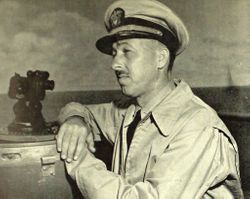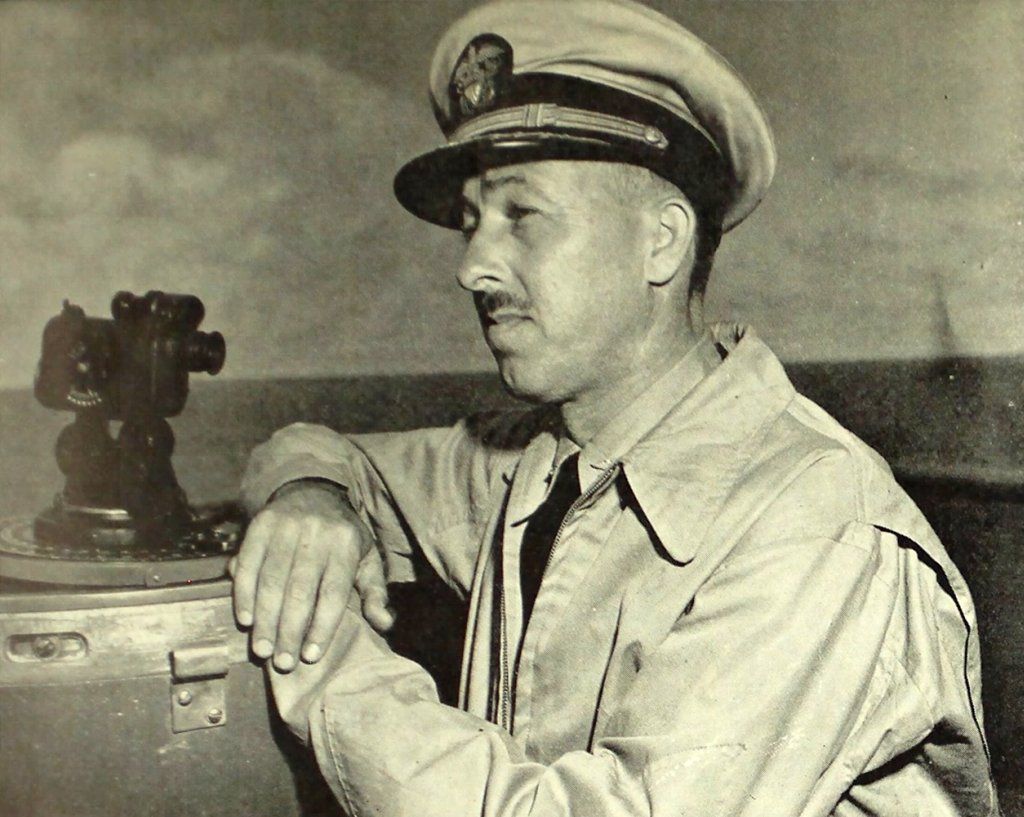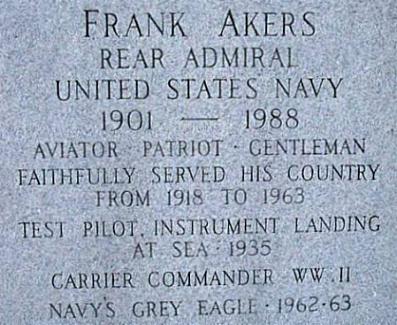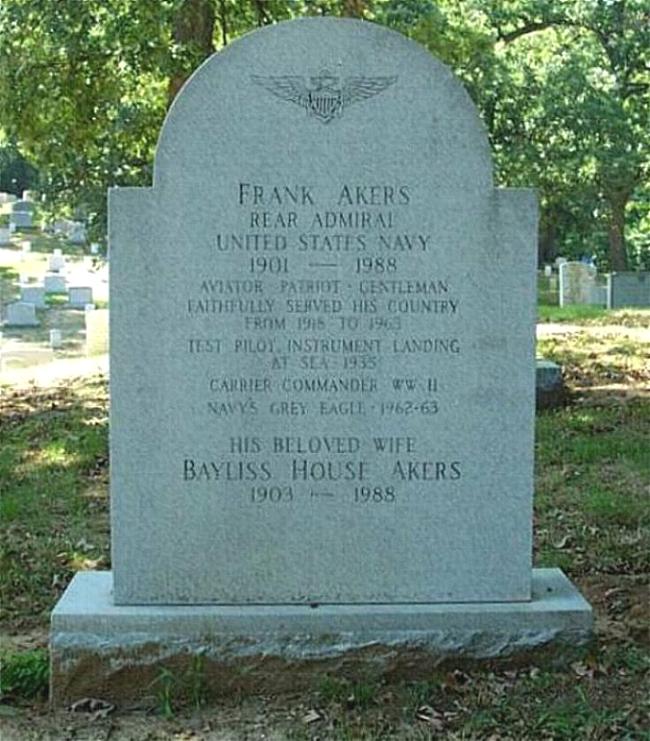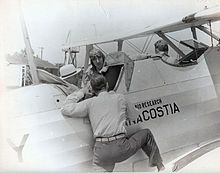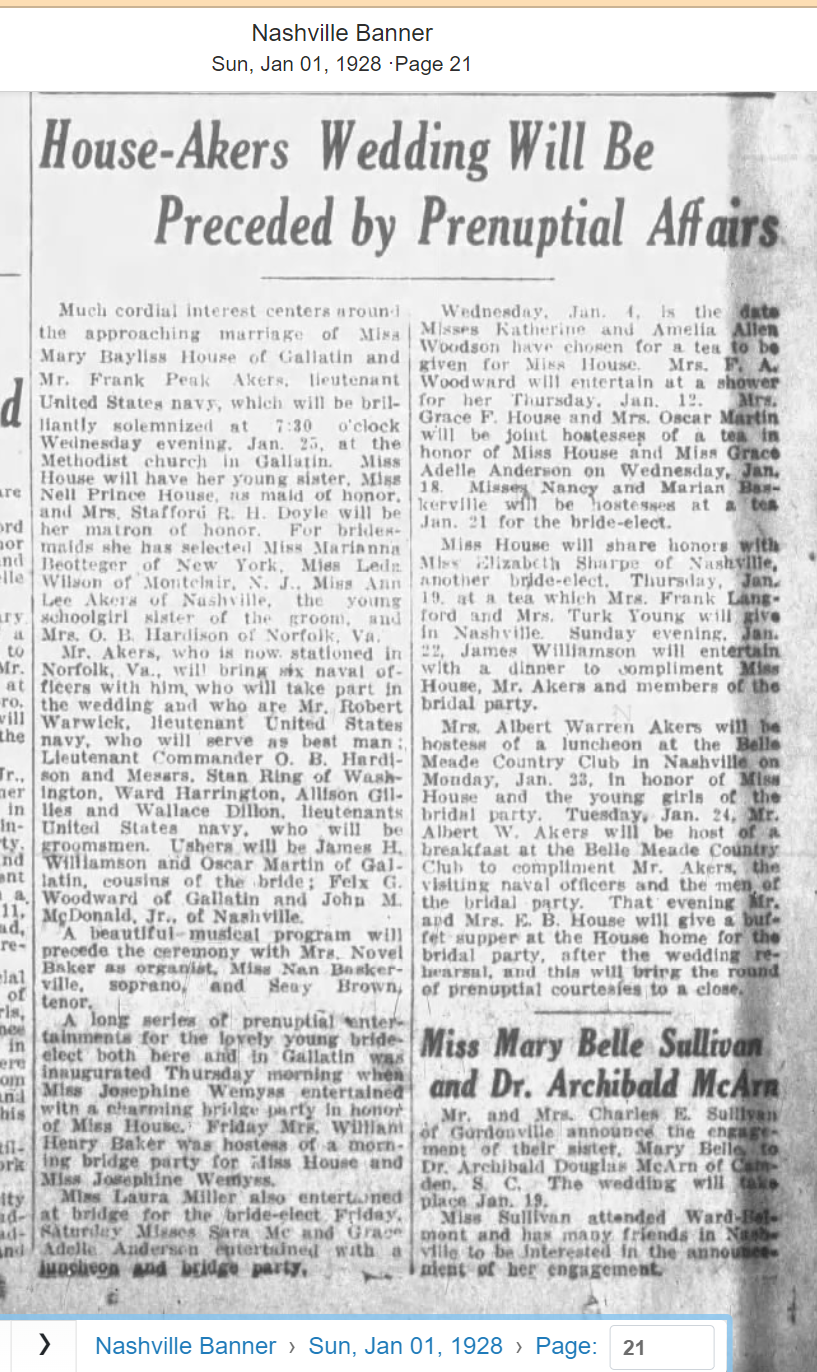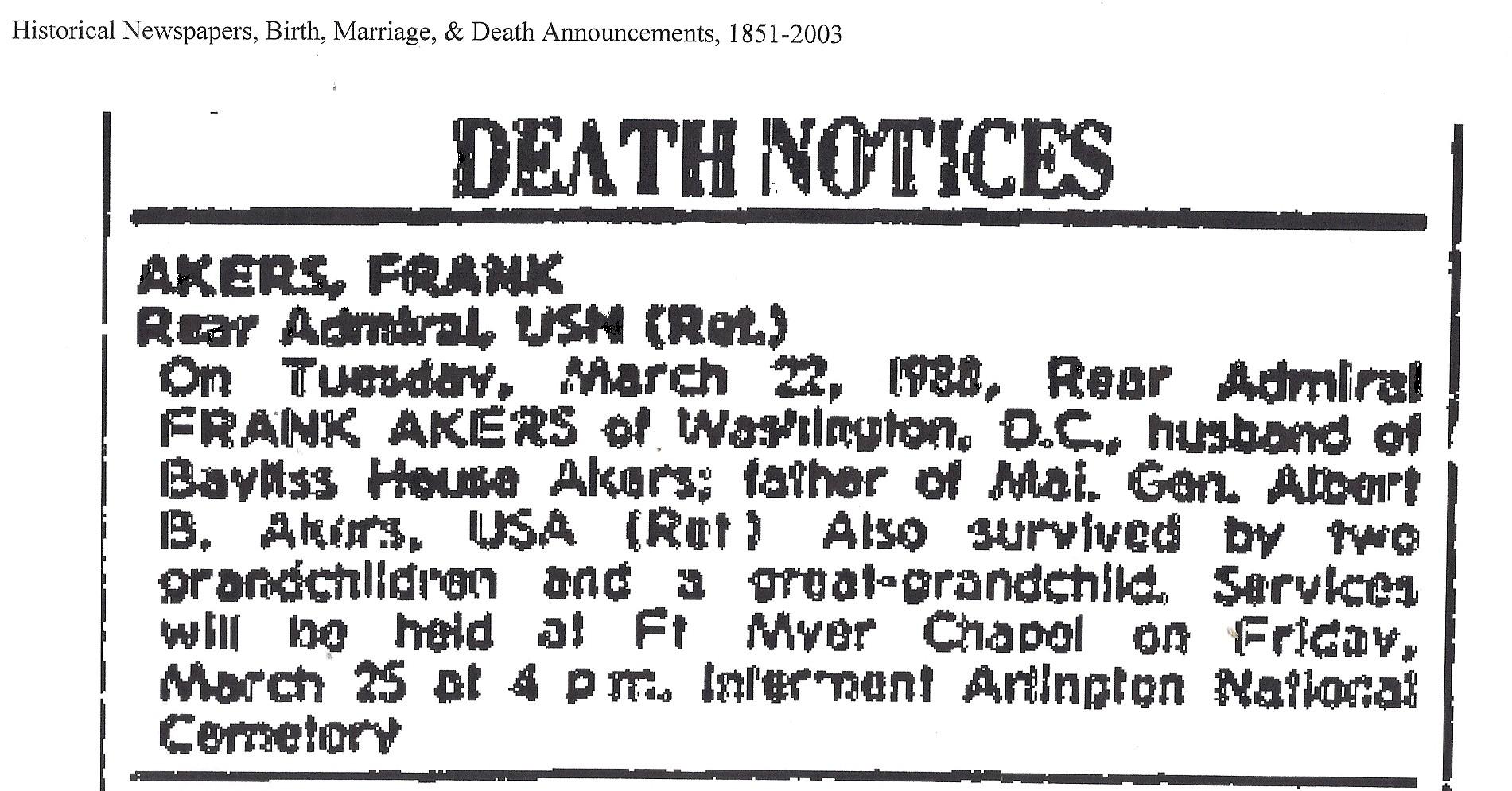Frank Peak Akers graduated from the US Naval Academy in 1922 and was soon assigned to the destroyer, USS Sumner, which operated in the Pacific Ocean. On 11 September 1925, he earned his naval aviator "Wings of Gold". In 1933, he earned a master's degree in electronic communications from Harvard University. Following that, he was a flight test officer at the Naval Air Station in San Diego, California. While in this assignment on 30 July 1935, he participated in an unusually hazardous experiment when he successfully landed on the nation's first aircraft carrier, the USS Langley, while fitted with a special hood for the first "blind landing". He was awarded the Distinguished Flying Cross for this.
During World War II, Akers was navigator on the aircraft carrier USS Hornet, and participated in the famed Doolittle Raid on Tokyo and in the Battle of Midway. Later in the war, while stationed in Washington as head of the Radio and Electrical Branch of the Bureau of Aeronautics, he received the Legion of Merit for his part in developing more efficient and simplified aircraft electronic systems, including radar bombing.
After the war, as the commanding officer of the carrier USS Saratoga from 1945 to 1946, the ship made a record-breaking 642 carrier landings in a single day. He is also the only aviator ever to have been assigned as Assistant Chief of Naval Operations for Undersea Warfare, from 1951 to 1954. On 11 January 1962, he received the Gray Eagle Award honoring him as the Naval Aviator who had been flying longer than any other on active duty, a record he held until his retirement on 1 April 1963. Following retirement, Akers settled in the Washington, D.C. area, where he died in 1988, five days short of his 87th birthday. He was survived by his wife, Mary, who died several months later.
Frank Peak Akers graduated from the US Naval Academy in 1922 and was soon assigned to the destroyer, USS Sumner, which operated in the Pacific Ocean. On 11 September 1925, he earned his naval aviator "Wings of Gold". In 1933, he earned a master's degree in electronic communications from Harvard University. Following that, he was a flight test officer at the Naval Air Station in San Diego, California. While in this assignment on 30 July 1935, he participated in an unusually hazardous experiment when he successfully landed on the nation's first aircraft carrier, the USS Langley, while fitted with a special hood for the first "blind landing". He was awarded the Distinguished Flying Cross for this.
During World War II, Akers was navigator on the aircraft carrier USS Hornet, and participated in the famed Doolittle Raid on Tokyo and in the Battle of Midway. Later in the war, while stationed in Washington as head of the Radio and Electrical Branch of the Bureau of Aeronautics, he received the Legion of Merit for his part in developing more efficient and simplified aircraft electronic systems, including radar bombing.
After the war, as the commanding officer of the carrier USS Saratoga from 1945 to 1946, the ship made a record-breaking 642 carrier landings in a single day. He is also the only aviator ever to have been assigned as Assistant Chief of Naval Operations for Undersea Warfare, from 1951 to 1954. On 11 January 1962, he received the Gray Eagle Award honoring him as the Naval Aviator who had been flying longer than any other on active duty, a record he held until his retirement on 1 April 1963. Following retirement, Akers settled in the Washington, D.C. area, where he died in 1988, five days short of his 87th birthday. He was survived by his wife, Mary, who died several months later.
